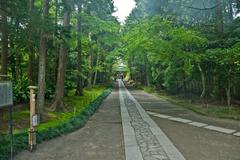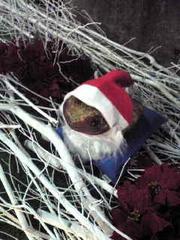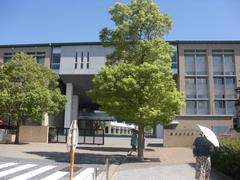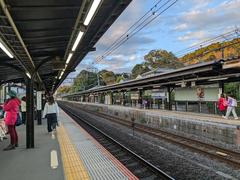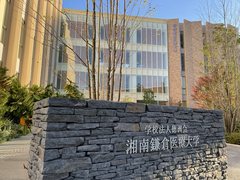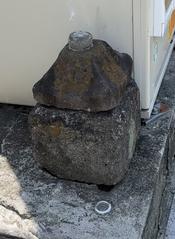Kamakura Seven Entrances: Complete Guide to Visiting Hours, Tickets, Hiking, and Historical Sites
Introduction
Kamakura’s Seven Entrances (Kamakura Nanakuchi or Nana-kiridoshi) are a series of ancient mountain passes that once formed the only land gateways to this historic city. Carved through steep hills during the Kamakura period (1185–1333), these narrow, defensible routes played a crucial role in shaping Kamakura’s legacy as the seat of Japan’s first samurai government. Today, the Seven Entrances offer visitors a unique opportunity to explore Japan’s feudal past amid scenic woodlands and culturally rich sites. This comprehensive guide covers everything you need to plan your visit: historical background, visiting hours, ticket information, accessibility, hiking tips, and nearby attractions. (thatjapanlife.com; kcpinternational.com)
Table of Contents
- Historical Background and Strategic Purpose
- Construction and Engineering
- The Seven Entrances: Names and Locations
- Cultural and Symbolic Significance
- Visiting Information: Hours, Tickets, Accessibility
- Trail Conditions, Safety, and Seasonal Tips
- Nearby Attractions & Suggested Itineraries
- Preservation and Legacy
- Frequently Asked Questions (FAQ)
- Conclusion & Call to Action
- References
Historical Background and Strategic Purpose
Kamakura’s geography—enclosed by steep hills on three sides and the sea on the fourth—made it a natural fortress. Minamoto no Yoritomo, founder of the Kamakura Shogunate, selected the city for its defensibility. The Seven Entrances were intentionally cut through the hills, serving as controlled access points that could be easily defended or barricaded. This strategy transformed Kamakura into a “walled city” without actual walls, reflecting the samurai’s pragmatic military ethos. (factsanddetails.com; kcpinternational.com)
Construction and Engineering
The Seven Entrances were engineered directly into the hills, often expanding pre-existing trails to accommodate foot traffic, horses, and later palanquins. Passes were kept narrow—sometimes just two meters wide—with steep earthen or stone walls to maximize defense. Fortifications such as wooden gates, watchtowers, and ditches were added at strategic points, making these routes formidable obstacles during conflict. (thatjapanlife.com; kcpinternational.com)
The Seven Entrances: Names and Locations
1. Kewaizaka Pass (Kewaizaka Kiridoshi): Northwest, connecting to the Musashi Plain.
2. Kamegayatsu Pass (Kamegayatsu Kiridoshi): North, leading toward Kita-Kamakura and Tsurugaoka Hachimangu Shrine.
3. Gokurakuji Pass (Gokurakuji Kiridoshi): Southwest, near Gokurakuji Temple and the Enoden railway.
4. Nagoe Pass (Nagoe Kiridoshi): Southeast, linking to the Miura Peninsula.
5. Asaina Pass (Asaina Kiridoshi): Northeast, providing access to Kanazawa and Yokohama.
6. Daibutsu Pass (Daibutsu Kiridoshi): West, near the Great Buddha and Shichirigahama coast.
7. Kobukurozaka Pass (Kobukurozaka Kiridoshi): North, connecting to the Yamanouchi area and Engakuji Temple.
Each pass served as a vital artery for commerce, communication, and military movement, with locations chosen for both accessibility and defense. (kcpinternational.com; factsanddetails.com)
Cultural and Symbolic Significance
The Seven Entrances symbolize Kamakura’s samurai spirit and strategic resilience. Their rugged simplicity reflects the ethos of the warriors who built and guarded them. Over centuries, these passes became embedded in folklore, poetry, and art, and their proximity to major temples and shrines integrated them deeply into Kamakura’s spiritual heritage. Guidebooks from the Edo period popularized the term “Kamakura Nanakuchi,” emphasizing their historical and cultural importance. (thatjapanlife.com; Wikipedia)
Visiting Information: Hours, Tickets, Accessibility
Visiting Hours
- Open year-round. As public trails, the Seven Entrances have no official hours, but hiking during daylight (7:00 AM to sunset) is recommended for safety.
Tickets and Fees
- Free access. No tickets or entrance fees are required for the passes themselves.
- Nearby Temples: Some connected temples (e.g., Kotoku-in, Hasedera) may charge admission.
Accessibility
- Terrain: Expect uneven, steep, and sometimes slippery trails. Most passes are not wheelchair accessible and are best suited for visitors with moderate hiking ability.
- Children: Shorter passes (e.g., Kewaizaka) are manageable for children with supervision.
- Facilities: Little to no restroom or vending facilities on trails—prepare accordingly.
Guided Tours and Maps
- Guided tours are available through local operators, often including historical context and safety support.
- Maps and signage (in Japanese and English) are available at Kamakura Station’s Tourist Office and trailheads. A GPS-enabled device is recommended due to limited signage in some areas. (factsanddetails.com; Atlas Obscura)
Trail Conditions, Safety, and Seasonal Tips
- Trail Quality: Passes vary from well-preserved stone steps (Kewaizaka, Asaina) to partially paved (Gokurakuji) and rugged forest paths (Daibutsu, Nagoe). Surfaces can be muddy after rain.
- Safety: Wear sturdy hiking shoes, carry water, and check weather forecasts, especially during the rainy season (June, September). Trails may be slippery or blocked by landslides.
- Seasonal Highlights: Spring (cherry blossoms) and autumn (foliage) provide the most scenic experiences. Hydrangeas bloom along some trails in early summer.
- Wildlife: Be cautious of vipers, bees, and mosquitoes—use repellent and protective clothing.
- Crowds: Weekends and festival days are busiest; visit early morning or on weekdays for a quieter experience. (HikersBay)
Nearby Attractions & Suggested Itineraries
- Tsurugaoka Hachimangu Shrine: Near Kamegayatsu Pass, a major spiritual and historical site.
- Great Buddha (Daibutsu): Accessible via Daibutsu Pass.
- Zen Temples: Kenchoji and Engakuji are close to Kamegayatsu and Kobukurozaka.
- Hasedera Temple: Near Gokurakuji Pass, renowned for hydrangeas.
- Yuigahama Beach: Close to some trail exits for post-hike relaxation.
- Komachi Street: Near Kamakura Station, offers traditional snacks and shopping.
- Suggested Route: Begin at Kamakura or Kita-Kamakura Station, hike Daibutsu or Kewaizaka Pass, visit the Great Buddha, and finish with a stroll on Komachi Street. (Japan Horizon; Trip to Japan)
Preservation and Legacy
Many of the Seven Entrances remain largely unchanged since medieval times, though some (Gokurakuji-zaka, Kobukurozaka) have been adapted for modern use. Preservation is spearheaded by local authorities and volunteer groups, ensuring trail maintenance, erosion control, and historical signage. Several passes are designated as nationally significant landmarks and are proposed for UNESCO World Heritage status. Visitors are asked to respect trail rules, stay on marked paths, and carry out all trash. (Buzz Trip; Official Kamakura Tourism)
Frequently Asked Questions (FAQ)
Q: Are the Seven Entrances open year-round?
A: Yes, they are accessible year-round as public trails. Daylight visits are strongly recommended.
Q: Do I need a ticket to visit?
A: No. The passes themselves are free, but some nearby temples require admission fees.
Q: Are the trails suitable for children?
A: Some shorter passes are child-friendly, but all require supervision and a reasonable fitness level.
Q: Is there wheelchair access?
A: Most passes are not wheelchair accessible due to steep and uneven terrain.
Q: When is the best time to visit?
A: Spring and autumn provide the best weather and scenery.
Q: Are guided tours available?
A: Yes, local operators offer group and private tours with historical explanations.
Conclusion & Call to Action
Kamakura’s Seven Entrances offer an unparalleled blend of history, culture, and natural beauty. These ancient passes allow you to walk in the footsteps of samurai and monks, experience rugged landscapes, and discover iconic temples and shrines. For the best experience, visit in spring or autumn, prepare for moderate hiking, and consider joining a guided tour. Enhance your adventure by downloading the Audiala app for trail maps and audio guides, and stay informed about preservation efforts and local events.
Ready to explore Kamakura’s samurai past? Download the Audiala app, follow us on social media, and check out our other guides on Kamakura’s temples and festivals for a complete cultural journey.
References and Further Reading
- Exploring Kamakura’s Seven Entrances: Visiting Hours, Tickets, and Historical Insights, KCP International
- Exploring Kamakura’s Seven Entrances: History, Visiting Tips & Attractions, Adventure Backpack
- Kamakura Seven Entrances Guide: Visiting Hours, Tickets, and Hiking Tips for Historical Sites, Must Love Japan
- Explore Kamakura Seven Entrances: Visiting Hours, Tickets & Historical Sites Guide, Wikipedia
- Kamakura Nanakuchi (Seven Entrances) Historical Overview, Facts and Details
- Kamakura History and the Seven Entrances, That Japan Life
- The Strategic and Cultural Importance of Kamakura’s Seven Entrances, Atlas Obscura
- Nagoe Kiridoshi and Other Passes, Buzz Trip
- Official Kamakura Tourism
- Trip to Japan: Getting from Tokyo to Kamakura
- Japan Horizon: Day Trip to Kamakura
- HikersBay: Kamakura Tourist Information
